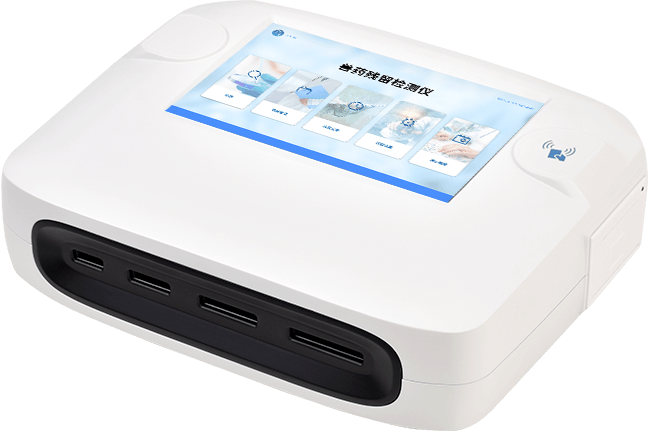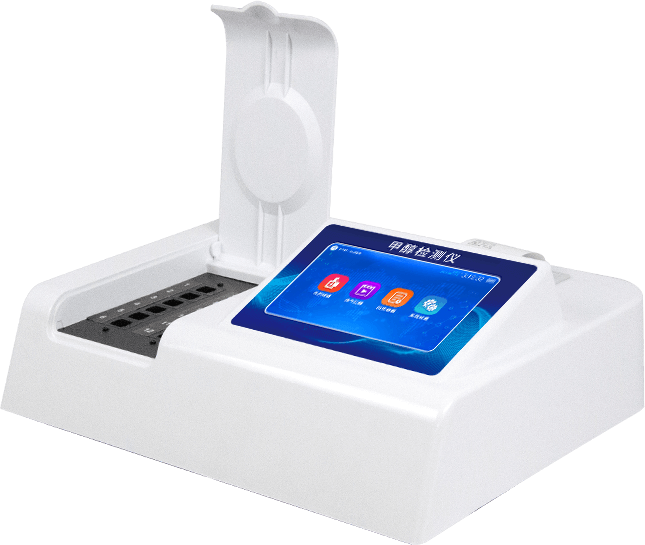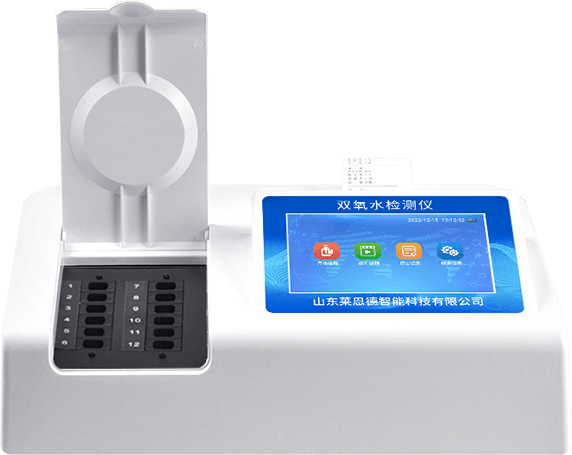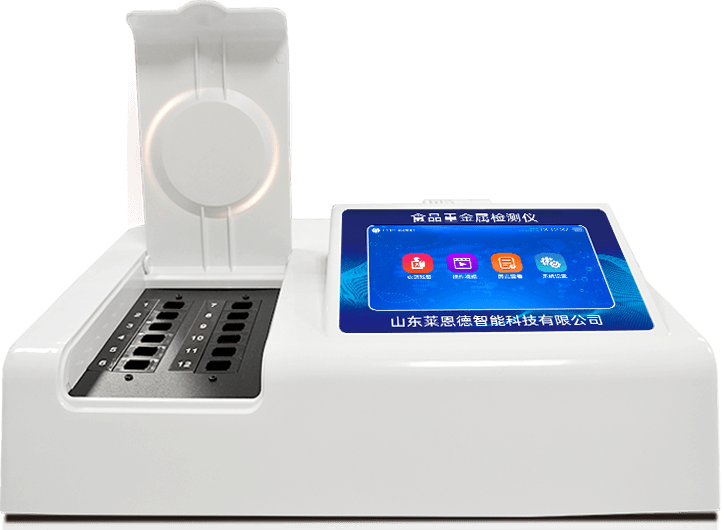
Veterinary drug testing device
- Product Number:LD-SY03
- Product Difference:1 single card + 3 multi-card design, capable of performing functions such as data collection, statistics, queries, exchanges, uploads, and printing
Product Introduction
A veterinary drug testing instrument refers to equipment used to detect residual veterinary drugs (including antibiotics, hormones, anthelmintics, sedatives, beta-adrenergic agonists, etc.) in animal-derived foods (such as meat, eggs, dairy products, aquatic products, honey, etc.) and their processed products.
Such instruments are crucial for ensuring food safety, protecting consumer health, promoting international trade, and ensuring the quality of animal-derived products.
Main application scenarios: farms/slaughterhouses, food processing companies, market supervision departments (such as the Food and Drug Administration, Ministry of Agriculture and Rural Affairs, etc.), third-party testing institutions, agricultural product wholesale markets/supermarkets, and research institutes.
The instrument's testing projects include:
1. Clenbuterol hormones: clenbuterol hydrochloride, salbutamol, ractopamine, diethylstilbestrol, quinethione, etc.
2. Antibiotic residues: tetracyclines, nitrofurans, sulfonamides, beta-agonists, fluoroquinolones, sulfonamides, quinolones, thiamphenicol, florfenicol, amantadine, tilmicosin, gentamicin, lincomycin, streptomycin, enrofloxacin, ciprofloxacin, cefadroxil, penicillin, amoxicillin, etc.
3. Aquatic product safety category: Malachite green, chloramphenicol, furazolidone, furazolidone, furazolidone, furazolidone, etc.
4. Drug residues in eggs: Chloramphenicol, tetracycline, sulfonamides, quinolones, furazolidone, furazolidone, furazolidone, furazolidone, florfenicol, amoxicillin, cefalexin, erythromycin, streptomycin, etc.
5. Animal diseases: Avian influenza, Newcastle disease, foot-and-mouth disease in cattle and sheep, tuberculosis in cattle and sheep, cysticercosis in cattle and sheep, brucellosis in cattle and sheep, small ruminant diseases, porcine reproductive and respiratory syndrome virus, classical swine fever virus, pseudorabies virus, porcine parvovirus, porcine circovirus, canine parvovirus, canine distemper virus, and canine rabies virus, etc.
Product Features
The instrument features a streamlined design that is both aesthetically pleasing and durable.
It has a large LCD screen with a user-friendly interface and intuitive readouts.
The light source uses light-emitting diodes, which offer advantages such as energy efficiency, environmental friendliness, power savings, long service life, and fast response times.
The instrument features a large memory capacity, capable of storing and measuring multiple detection parameters.
The internal microprocessor performs self-diagnosis on the power supply, circuits, and light source.
Users can access, print, or delete stored measurement data at any time based on the detection date.
The instrument is equipped with two USB ports, enabling data processing and statistical analysis directly through the instrument.
Powerful network monitoring functionality, including measurement data systems and monitoring management systems, enabling data collection, statistics, queries, exchanges, uploads, and printing. This allows management departments and regulatory authorities to effectively implement remote monitoring and management.
Built-in quality control functionality, with support for QR code scanning to input sample information, minimizing human error.
The instrument consists of a switching power supply, optical system, Android system, and sample transmission system.
Diverse comprehensive Chinese report output is supported, along with an internal thermal printer.
Product parameters
| Device Parameters | 10.1-inch capacitive touchscreen, resolution 1280 x 800, internal storage 1+8GB, operating system Android 7.1 |
| Detection Method | Reflective photoelectric detection |
| Language | Chinese/ English |
| Storage Capacity | 100,000+ |
| Accuracy | Error value ≤ 5% |
| Stability | SW (Coefficient of Variation) ≤ 5% |
| Repeatability | CV (coefficient of variation) ≤ 3% |
| Resolution | 0.001 |
| Channels | 1 single-card slot (70mm x 20mm x 5.6mm); 1 dual-card slot (70mm x 28mm x 5.6mm); 1 triple card slot (70mm x 40mm x 5.6mm); 1 quadruple card slot (70mm x 50mm x 5.6mm) |
| Testing time | < 5 seconds (single card and multi-card), capable of performing colloidal gold qualitative/ semi-quantitative testing of samples |
Card insertion detection | The test card cannot be detected if it is not inserted into the test channel |
| Built-in functions | Built-in quality control functions, including device calibration, device self-check, and reagent card self-check |
| Testing method | Incubation testing, point-of-care testing (for re-verification of test data) |
| Test curve | Can verify the test results of the reagent card to prevent misjudgment |
| Test results | The report displays test items, concentration of the tested substance, test units, inspected units, inspector, test time, detection limit, etc., which can be displayed on the touchscreen and printed via the built-in printer of the instrument |
| Project Management | Supports expansion of testing projects |
| Interface Settings | Allows modification of headers and footer information to flexibly display instrument information |
| Printer | Thermal printer (thermal paper: 57x30mm) |
| Data Transmission | WiFi, Bluetooth, USB, RF card reader, external barcode scanning module (optional) |
| Data Processing | Data aggregation and upload to the regulatory platform via communication ports |
| Temperature Range | The testing channel integrates incubation and testing, with a temperature range of room temperature +5°C to 60°C |
| Interfaces | 2 USB ports; 1 USB-B port; 1 LAN port; 1 DC power port (5.5/2.1mm) |
| Power supply | Input: AC 100V-240V/1.3A, 50Hz; Output: DC 12V/5A |
| Operating environment | Temperature: 0°C to 50°C; Humidity 0–90% |
| Dimensions and Weight | 382mm x 300mm x 117mm, approximately 3.6kg |

 +86 19353291814
+86 19353291814
 +86 19353291814
+86 19353291814



